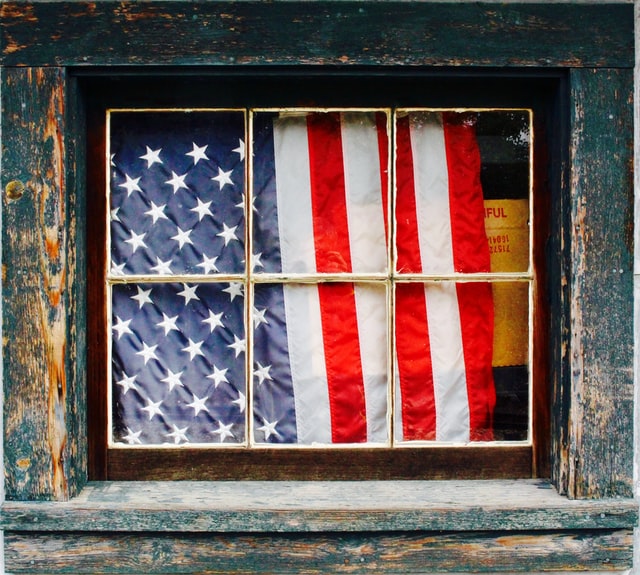Is America doomed?
Some say the US is in a superpower death spiral like the one that hit post-empire Britain. The signs of decline are there - but so are some green shoots

On August 16 it will be a year since Joe Biden signed into law one of the most consequential pieces of US legislation in decades – the Inflation Reduction Act (IRA). And now, despite the incessant dirge of declinism, America appears to be in reasonably good nick.
There is still some bumpiness. In early August, the US economy’s health was downgraded from “AAA” to “AA+” by ratings agency Fitch, much to the fury of Democrats, and inflation has just ticked up to 3.2%, rising for the first time in 13 months. The country continues to carry a huge amount of debt – $32tn (£25.2tn), equivalent to 128% of GDP.
But while the president remains unpopular, “Bidenomics”, the term the White House is using to describe the great reset, appears to be unleashing investors’ animal spirits. Billions of dollars are rolling into manufacturing, infrastructure and green innovation. As of April, spending on new factories was tracking at three times the $63bn annual rate customary in the 2010s.
In July, the US unemployment rate had been less than 4% for 17 straight months, the longest such stretch since the 1970s. In June, when inflation fell to a two-year low of 3%, wages rose by an average of 4.4%, meaning that American workers’ real buying power had increased.
Internationally, the US dollar overwhelmingly retains what a 1960s French finance minister sneeringly called its ”exorbitant privilege” as the world’s reserve currency. The dollar’s closest competitor is the Chinese yuan. In the last decade, the yuan’s share of global payments doubled – to a measly 3%. The dollar is at roughly 60% despite muttered speculation on the issue, from Russia to Africa to the Middle East.
Look across the pond and Britain, America’s predecessor as an Anglophone global hegemon, is in dire straits, some 75 years after its imperial assets started to be stripped away. In July, the UK was the only major economy saddled with rising inflation, according to the OECD. Britain remains short of one million workers – most of the unfilled jobs being in essential sectors such as construction, retail and agriculture – and it is stuck in the slough of low productivity.
As one US analyst has noted, it’s the UK, Italy and Japan, not America, that seem in danger of becoming “undeveloping” countries, with stagnation shading into decline.
And yet some still insist that the USA is on the same downward spiral that unmade British power in the 20th century. From Europe to Asia to Oceania, there are doubts about the strength and direction of American democracy, the scale of America’s influence, and the solidity of transatlantic and transpacific partnerships. There is concern about the extent to which US growth now depends on deficits and debt. There is dismay about the direction of a country that allows states to ban abortion while refusing to intervene against a gun culture that has produced 27 mass killings in the first six months of the year; America’s deadliest period since 2006.
And, of course, there is the fact that 55% of Americans consider that Biden is doing a bad job, potentially leaving the door to the White House open for a racist, sexist bully who was twice impeached and now has three criminal indictments. Were America to have a second Donald Trump presidency, it could be curtains for old alliances, the US commitment to Nato and to climate change initiatives.
Funnily enough, the declinists have long been in the ascendancy – even when there was no Trump on the political scene and America was emphatically not in decline. For much of what TIME magazine’s publisher, Henry Luce, christened “the American century”, American declinism was both cottage industry and big business.
Since the mid-1950s, when the US became the world’s dominant power, American declinism has been a passionate subject of intellectual and policy debate. In the 60s, there was Challenge to Affluence, a book by Gunnar Myrdal, economist and future Nobel laureate. It warned that the US was suffering from “relative economic stagnation” and needed to drastically change course if it were not to fall behind the Soviet Union. In the 70s, there was The End of the American Era by political scientist Andrew Hacker, which declared that the US was “no longer capable of being a great power”. In the 80s, Harvard Business School professor George Cabot Lodge II wrote The American Disease, which drew unfavourable parallels with the post-imperial British economy’s loss of competitiveness.
And then came British historian and Yale professor Paul Kennedy’s 1987 international bestseller, The Rise and Fall of the Great Powers. It looked briefly at empires prior to 1500, then focused on once-dominant powers of the next five centuries – Habsburg Spain, Bourbon France, the British empire – and finished by analysing trends that revealed, Kennedy said, the US in relative decline after a 40-year period of unusual supremacy. The decline would occur, he said, partly because of “imperial overstretch” as well as the rise of the rest, notably Japan. Paraphrasing George Bernard Shaw, Kennedy wrote in reference to the richest town on the US east coast: “Rome fell; Babylon fell; Scarsdale’s turn will come.”
With hindsight, the late 20th century’s persistent narrative of decline can be interpreted as fear – that America’s good fortune could not possibly last and its luck must inevitably run out. In the noughties and teens of this century, declinism has remained a constant drumbeat, rising to fever pitch in the post-Trump era.
The difference now is that the declinism charge is about facts, not just fear.
The US federal government continues to be plagued by extreme political partisanship, and for all that admiring books are being written about the IRA remaking the world’s green industrial policy, it cleared the Senate only by a backdoor special process called reconciliation. That was a way to bypass the dreaded filibuster, an archaic manoeuvre that is not in the US Constitution but has become a part of the federal legislature’s byzantine rules, requiring supermajority approvals for even the most ordinary legislation and rendering gridlock almost endemic to the American system. As Barack Obama once noted, “If I sponsor a bill declaring apple pie American, it might fall victim to partisan politics”.
Then there are the ongoing attempts by Republicans at federal and state level to enact anti-democratic, almost anti-people legislation to suppress voting by minority groups more likely to vote for the Democrats. With the US unable to manage that sine qua non of a democracy – the peaceful transfer of power – in its last presidential election, it now faces the challenge of avoiding a repeat, possibly more decisive and dangerous showdown in 2024.
Meanwhile, political polarisation is demonstrably altering Americans’ perception of truth and lies. One year into Biden’s presidency, a national poll showed that more than 40% of Americans still didn’t believe or weren’t sure he legitimately won the 2020 election even though there was no evidence of widespread voter fraud.
Add to that the usual laundry list of creeping decrepitude – an under-resourced education system in the centre of the culture wars, rising wealth inequality, the hollowing out of the middle class and the influence of money and special interests in a never-ending election cycle.
As William Safire trenchantly noted in the closing months of the presidency of the first George Bush, “the ouching outcasts of outrage” are in full cry, and they’re complaining “that it’s late afternoon in America”. But that was in 1992. Right now, it feels closer to midnight in the United States. This time, American declinism seems real. Is it?
Yes and no. The idea of certain decline should be tested against recent examples of American political even-handedness, cohesion and resilience.





